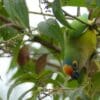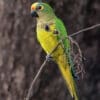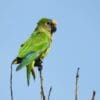Peach-fronted Conure
Also known as:
Peach-fronted Parakeet, Golden-crowned Conure
Also known as:
Peach-fronted Parakeet, Golden-crowned Conure

Eupsittula

aurea
Size:
26 cm (10 in)
Weight:
80-105 g (2.8-3.7 oz)
Subspecies including nominate:
two: E.a. aurea, E.a. major
Colour Adult:
E.a. aurea: Both adults yellow/orange forehead and forecrown; back of crown and occiput to lores dull blue; light olive throat, cheeks and breast. Beak grey/black. Eye-ring orange, eye orange/yellow.
E.a. major: Both adults as in aurea but green slightly darker; frontal patch paler in colour; larger.
Colour Juvenile:
As in adults but with narrower frontal patch. Bare eye ring pale grey in colour, eye grey.
More Information:
Content Sources:
CITES
BirdLife International
Cornell Lab of Ornithology/Birds of the World
A Guide to Parrots of the World, Juniper and Parr, 1998
Parrots of the World, Forshaw and Cooper, 1989.
Parrots of the World, Forshaw, 2006.
Parrots in Aviculture, Low, 1992.
Psittacine Aviculture, Schubot, Clubb and Clubb, 1992.
Captive Status:
One of the most popular in recent years, but limited breeding.
Longevity:
15-20 yrs
Housing:
Aviary or suspended enclosure, minimum length 2 m (6.5 ft).
Diet:
Fruit such as: apple, pear, orange, cactus fruits, pomegranate; forming about 30 percent of the diet; vegetables such as: carrot, celery, green peas and beans; corn on the cob, green leaves; spray millet, small seed mix (canary, millet, oats, buckwheat, safflower and limited sunflower); soaked and sprouted sunflower; cooked beans or pulses, and complete kibble.
Enrichment:
Bathing, foot toys, ladders, swings, bird-safe wood chewables such as fir, willow, pine or elder branches, bird-safe vegetable tanned leather chewables, heat sterilized pine cones.
Nest Box Size:
Vertical box, 12″ x 12″ x 18″ (30.5 cm x 30.5 cm x 45.7 cm).
Clutch Size:
2 to 6
Fledging Age:
7-8 weeks
Hatch Weight:
—
Peak Weight:
—
Weaning Weight:
—
World Population:
Unknown, stable.
IUCN Red List Status:
Least Concern
CITES Listing:
Appendix II
Threat Summary:
Heavily trapped (61,311 individuals recorded in international trade since 1981). May be increasing in numbers with the clearance of humid forest for agriculture across Brazil but suffers high nestling mortality rates as a result of trapping. Once common in Argentina it is now rare and for unknown reasons is still officially on the list of pest species.
Range:
E.a. aurea: S Surinam, N Brazil, and south of Amazon River from NE and inland Brazil to E Bolivia, SE Peru and NW Argentina.
E.a. major: Exact range not known, but recorded from N Paraguay.
Habitat:
Occurs in open woodland areas including deciduous forest, gallery woodland, Mauritia palm swamp and savanna as well as cultivated areas. In Amazon River area occurs in low scrubby vegetation on sandy soil; in interior E Brazil occupies caatinga and cerrado areas with grassland. Below 600 m (1968 ft).
Wild Diet:
Eats seeds of Ilex, Banisteriosis, Campomanesia adamantinum, Eucalyptus, Symplocos and Aegiphylla, flowers of Qualea, Caryocar brasiliensis and Tabebuia, pulp of Anarcadium, and leaves of Vochysia thyrsoidea and Ocotea. Also insects, including termites and larvae of beetles, flies and moths.
Ecology and Behaviour:
Found in pairs during breeding season otherwise in groups of 10-30 birds; feeds in trees and on ground often in company of other parrot species. Tame and approachable. Roosts communally.
Clutch and Egg Size:
2 to 6 rounded eggs, 27.5 x 22.0 mm (1.1 x 0.8 in).
Breeding Season:
June-December, depending on location. Nest is in either terrestrial or arboreal termite mounds.
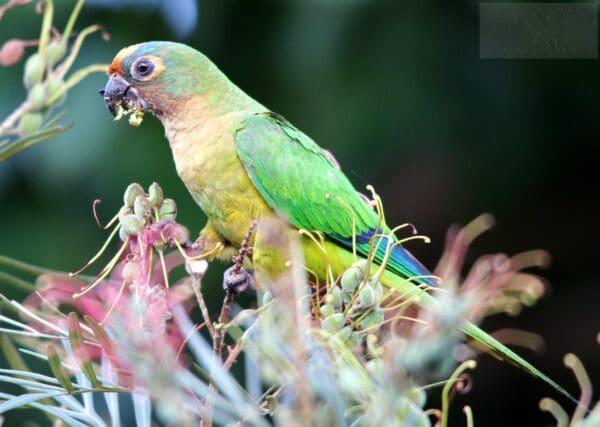

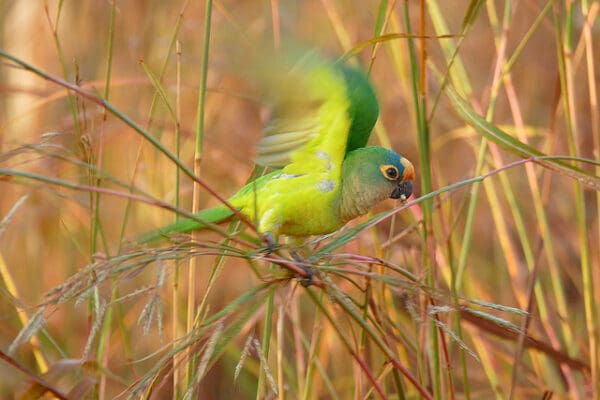
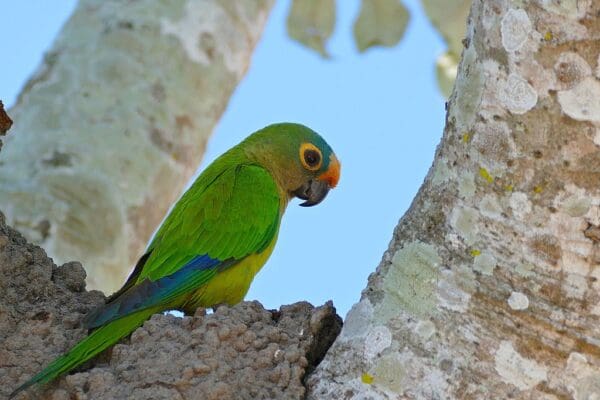
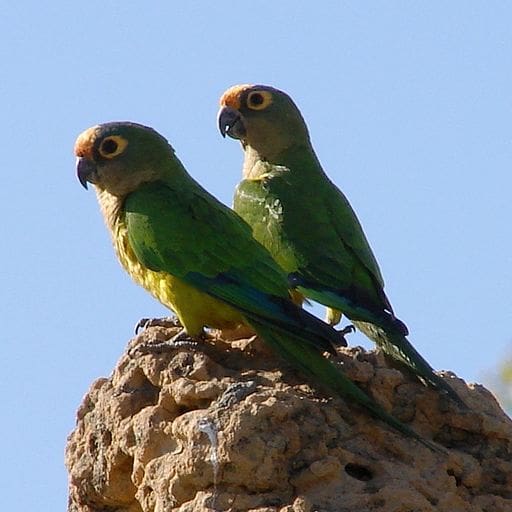
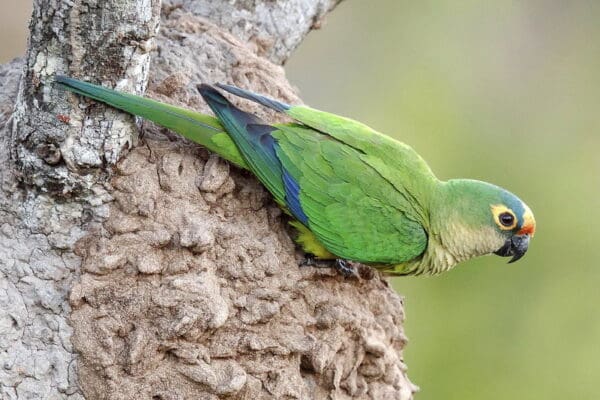
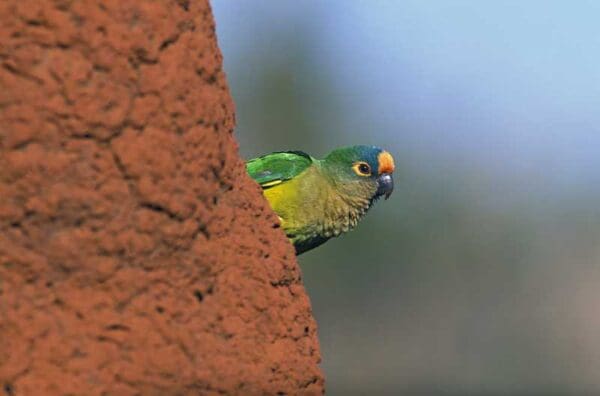
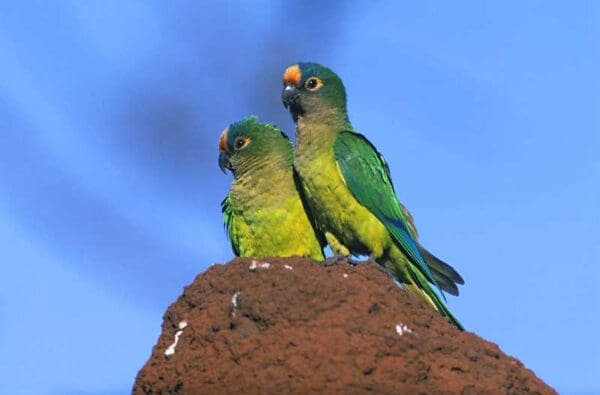
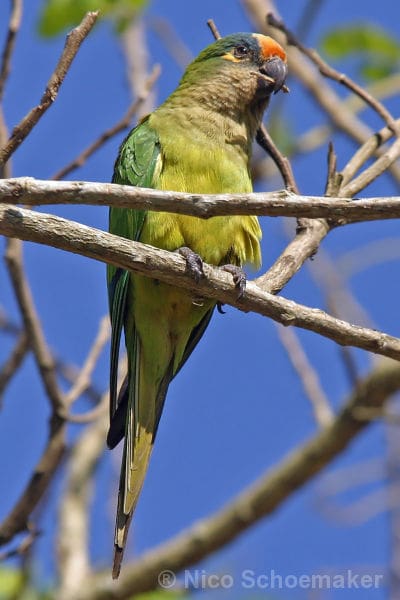

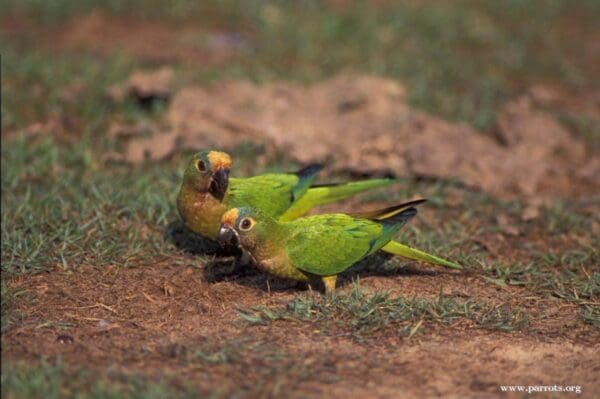

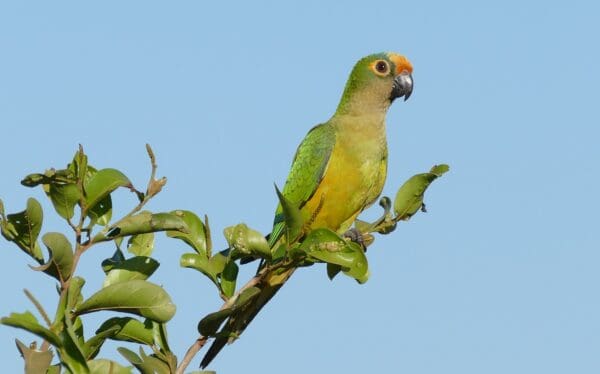
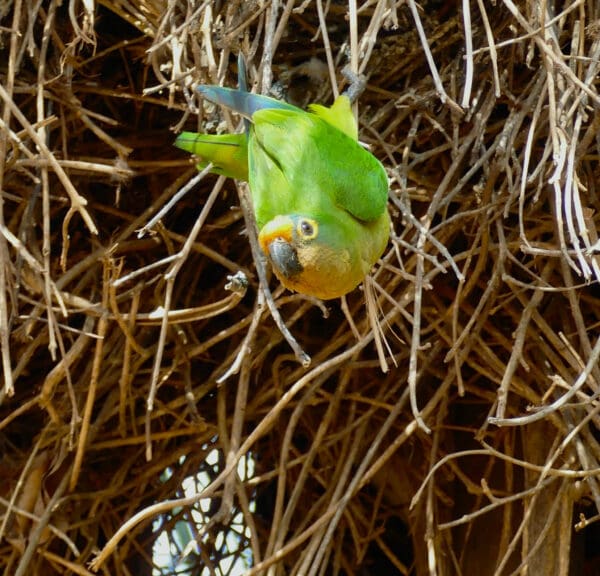

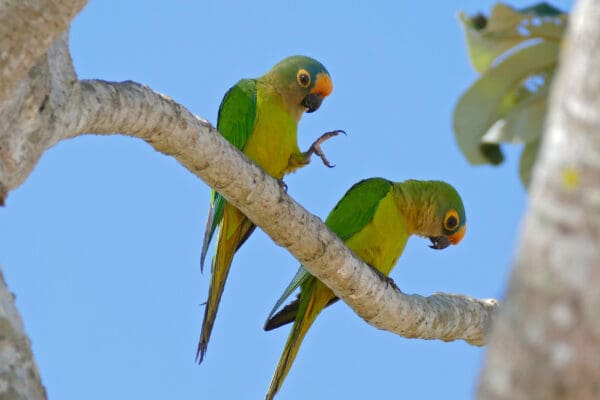
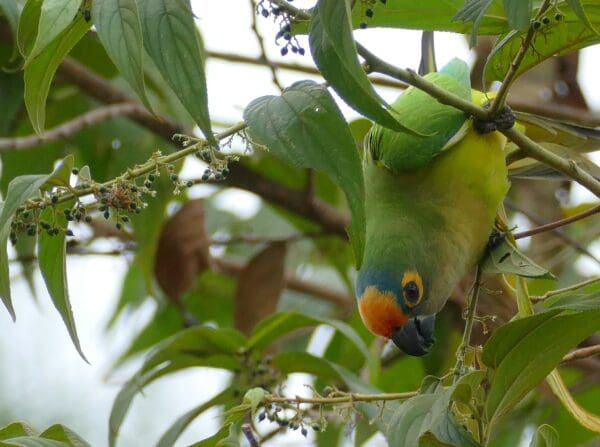
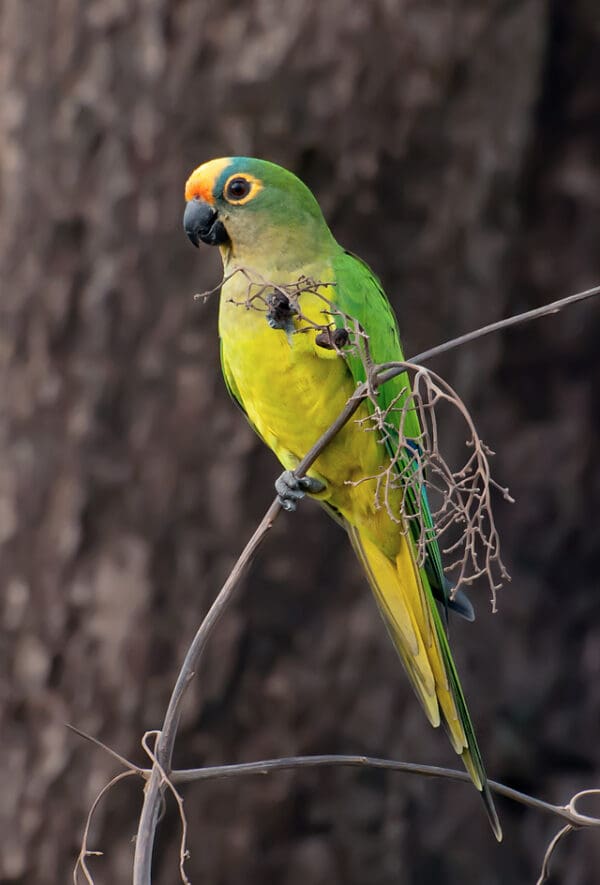
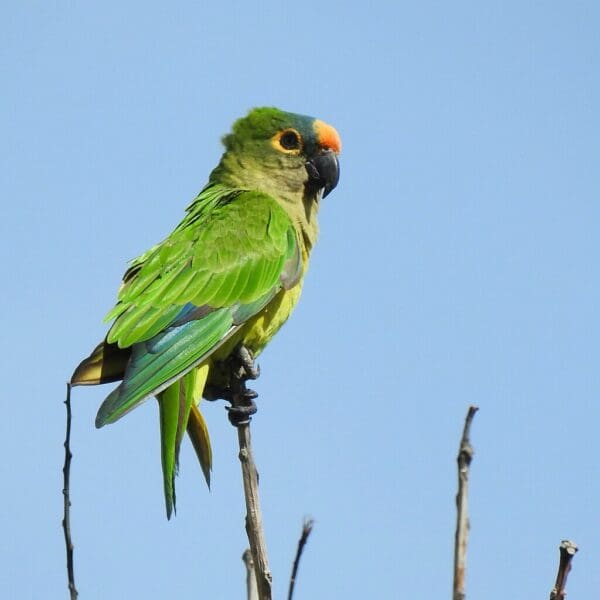
![© Luis Carlos Rocha [CC BY-SA 2.0] via Flickr A wild Peach-fronted Conure feeds on blossoms](https://parrots.org/wp-content/uploads/1990/09/Peach-fronted-Conure-Luis-Carlos-Rocha-100x100.jpg)
![© Nick Athanas [CC BY-SA 2.0] via Flickr A wild Peach-fronted Conure perches on a branch](https://parrots.org/wp-content/uploads/2023/01/wpt_Peach-fronted-Conure_1325-21-100x100.jpg)
![© Bernard DUPONT [CC BY-SA 2.0] via Flickr A wild Peach-fronted Conure perches in tall grass](https://parrots.org/wp-content/uploads/2023/01/wpt_Peach-fronted-Conure_1325-17-100x100.jpg)
![© Bernard DUPONT [CC BY-SA 2.0] via Flickr A wild Peach-fronted Conure perches on an arboreal termitarium](https://parrots.org/wp-content/uploads/2023/01/wpt_Peach-fronted-Conure_1325-15-100x100.jpg)
![© derivative work: Snowmanradio (talk) Aratinga_aurea_-Brazil-8.jpg: Glauco Umbelino [CC BY 2.0] via Wikimedia Commons Wild Peach-fronted Conures perch on a termite mound](https://parrots.org/wp-content/uploads/2023/01/wpt_Peach-fronted-Conure_1325-14-100x100.jpg)
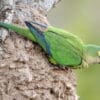
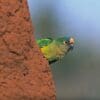

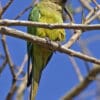
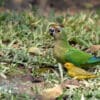
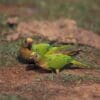
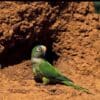
![© Bernard DUPONT [CC BY-SA 2.0] via Flickr A wild Peach-fronted Conure perches in a tree](https://parrots.org/wp-content/uploads/1990/09/Peach-fronted-Conure2-Bernard-DUPONT-100x100.jpg)
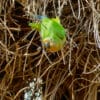
![© Bernard DUPONT [CC BY-SA 2.0] via Flickr Wild Peach-fronted Conures perch in the crook of a tree](https://parrots.org/wp-content/uploads/1990/09/Peach-fronted-Conures-Bernard-DUPONT-100x100.jpg)
![© Bernard DUPONT [CC BY-SA 2.0] via Flickr Wild Peach-fronted Conures perch on limb](https://parrots.org/wp-content/uploads/1990/09/Peach-fronted-Conure-Bernard-DUPONT-100x100.jpg)
